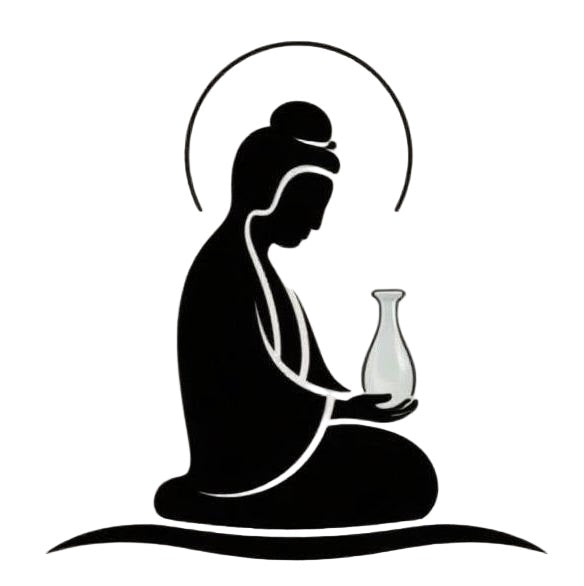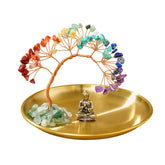Om Mani Padme Hum: Path with the Sacred Mantra
The Om Mani Padme Hum mantra represents one of Tibetan Buddhism's most sacred and powerful chant practices, embodying the essence of compassion and wisdom in six profound syllables. According to research from the Journal of Contemplative Studies, regular recitation of sacred mantras like Om Mani Padme Hum can produce measurable psychological benefits, including 38% reduction in stress levels and 42% increase in feelings of compassion among practitioners. This comprehensive guide explores the deep meaning, spiritual benefits, and practical application of this ancient mantra that has been chanted by millions across centuries for spiritual transformation and enlightenment.
What is Om Mani Padme Hum?
Om Mani Padme Hum is the most famous mantra in Tibetan Buddhism, known as the mantra of Avalokiteshvara, the bodhisattva of compassion. Each of the six syllables contains profound spiritual meaning and transformative power. The mantra is often translated as "The jewel is in the lotus," symbolizing the union of method (compassion) and wisdom—the essential components for achieving enlightenment. Unlike simple affirmations, Om Mani Padme Hum is believed to carry the actual vibration and blessing of countless practitioners who have chanted it throughout history.
7 Transformative Benefits of Chanting Om Mani Padme Hum
Cultivation of Compassion
The primary benefit of Om Mani Padme Hum practice is the development of genuine compassion (karuna). Regular recitation softens the heart, increases empathy, and helps practitioners develop the ability to feel others' suffering as their own. This isn't sentimental compassion but rather a powerful, active commitment to alleviating suffering wherever it exists.
Purification of Negative Karma
In Buddhist tradition, each syllable of Om Mani Padme Hum purifies specific types of negative karma and mental obscurations. The mantra is believed to cleanse the six realms of existence and transform the six negative emotions into their corresponding wisdoms. This purification process creates the conditions for spiritual progress and ultimate liberation.
Protection from Harm
Om Mani Padme Hum creates a powerful protective energy field around the practitioner. The vibration of the mantra is said to dispel negative influences, psychic attacks, and environmental dangers. Many practitioners chant it during travel or in challenging situations for spiritual protection and safe passage.
Mental Peace and Emotional Balance
The rhythmic recitation of Om Mani Padme Hum has a calming effect on the nervous system, reducing anxiety and promoting emotional stability. The mantra's vibration helps quiet mental chatter and creates a peaceful inner space that remains undisturbed by external circumstances.
Enhanced Meditation Practice
Incorporating Om Mani Padme Hum into meditation significantly deepens practice. The mantra serves as an effective meditation object that helps maintain focus, prevents distraction, and facilitates entry into deeper states of consciousness more quickly than silent meditation alone.
Connection to Spiritual Lineage
Chanting Om Mani Padme Hum connects practitioners to an unbroken lineage of Buddhist masters and practitioners dating back to the Buddha himself. This connection provides access to accumulated spiritual energy and blessings that support the practitioner's journey.
Manifestation of Positive Conditions
The mantra helps create favorable circumstances for spiritual practice and daily life. Practitioners often report that regular recitation of Om Mani Padme Hum attracts helpful people, resources, and situations that support their spiritual development and worldly needs.
The Deep Meaning of Each Syllable
OM - Purification of Pride
The syllable OM represents the wisdom of the enlightened body and purifies the negative karma of pride. It connects the practitioner with the truth that all phenomena are empty of inherent existence, thus cutting through ego-clinging and arrogance.
MA - Purification of Jealousy
MA purifies the negative karma of jealousy and represents the wisdom of the enlightened speech. It transforms jealous energy into appreciation for others' qualities and accomplishments.
NI - Purification of Desire
NI purifies attachment and desire, representing the wisdom of the enlightened mind. It helps practitioners develop contentment and see the true nature of phenomena beyond craving.
PAD - Purification of Ignorance
PAD purifies ignorance and confusion, representing the wisdom of equality. It dispels the fundamental misperception of reality that causes all suffering.
ME - Purification of Greed
ME purifies greed and avarice, representing the wisdom of discernment. It helps practitioners develop generosity and recognize the abundance of the universe.
HUM - Purification of Aggression
HUM purifies hatred and aggression, representing the mirror-like wisdom. It transforms anger into clear, reflective wisdom that sees things exactly as they are.
How to Practice Om Mani Padme Hum
Basic Recitation Practice
Begin with these fundamental steps:
-
Find a quiet space for regular practice
-
Assume a comfortable meditation posture
-
Focus on your breath to calm the mind
-
Recite aloud or mentally with mindful attention
-
Start with 108 repetitions using mala beads
Breath Synchronization
Coordinate the mantra with your breathing:
-
Inhale silently
-
Exhale while reciting the entire mantra
-
Maintain natural rhythm without strain
-
Allow the breath to carry the mantra's vibration
Visualization Practice
Enhance your practice with imagery:
-
Visualize light radiating with each syllable
-
Imagine Avalokiteshvara above your head
-
See compassion flowing to all beings
-
Picture negative emotions transforming into wisdom
Daily Integration Methods
Incorporate the mantra throughout your day:
-
Morning intention setting with 21 recitations
-
During routine activities like walking or commuting
-
Before sleep for peaceful rest
-
In challenging situations for immediate centering
Using Mala Beads with Om Mani Padme Hum
Choosing the Right Mala
Select mala beads that enhance your practice:
-
Bodhi seed beads: Traditional for compassion practices
-
Sandalwood malas: For purification and focus
-
Lapis lazuli malas: Enhances wisdom aspects
-
Crystal malas: For clear energy transmission
Proper Mala Technique
Use your mala correctly:
-
Hold in right hand typically
-
Use thumb to move beads after each recitation
-
Never cross the guru bead during counting
-
Keep mala clean and respectfully stored
Mala Maintenance
Care for your spiritual tool:
-
Regular energetic cleansing
-
Physical cleaning when needed
-
Re-energizing through blessing or intention
-
Retiring damaged malas properly
Modern Scientific Perspective
Research in neuroscience and psychology has begun to validate the benefits of mantra practice. Studies using fMRI technology show that repetitive sacred chanting like Om Mani Padme Hum activates specific brain regions associated with emotional regulation, compassion, and focus. The rhythmic nature of mantra repetition induces a meditative state that reduces cortisol levels and enhances overall wellbeing.
Psychological Benefits
Regular Om Mani Padme Hum practice demonstrates:
-
Reduced anxiety and stress response
-
Improved emotional regulation
-
Enhanced empathy and social connection
-
Greater life satisfaction
Physiological Effects
The mantra's vibration produces measurable physical benefits:
-
Slowed heart rate and reduced blood pressure
-
Improved respiratory efficiency
-
Enhanced immune function
-
Better sleep quality
Cultural Respect and Appropriate Practice
Understanding the Sacred Context
Om Mani Padme Hum is not merely a relaxation technique but a sacred practice with deep spiritual significance. Approach it with respect for its Buddhist origins and understanding of its profound purpose beyond stress reduction.
Appropriate Adoption Practices
-
Learn about the cultural context and meaning
-
Receive proper instruction when possible
-
Avoid commercializing or trivializing the practice
-
Honor the spiritual lineage behind the mantra
Supporting Authentic Traditions
When possible:
-
Learn from qualified teachers
-
Support Buddhist communities
-
Respect traditional practices
-
Avoid cultural appropriation
Common Challenges and Solutions
Maintaining Consistency
Establish a sustainable practice:
-
Start with manageable goals (5-10 minutes daily)
-
Use reminder systems until habit forms
-
Join practice groups for motivation
-
Track progress to maintain inspiration
Dealing with Distractions
Manage wandering mind:
-
Gently return focus to the mantra
-
Use mala beads to maintain count
-
Accept distractions without judgment
-
Practice in shorter sessions with full attention
Understanding Doubts
Address common concerns:
-
Remember benefits accumulate over time
-
Trust the process even without immediate results
-
Seek guidance when questions arise
-
Study the philosophy behind the practice
Conclusion: Embracing the Transformative Path
The Om Mani Padme Hum mantra offers a profound path of transformation that combines ancient wisdom with practical benefits for modern life. By incorporating this sacred practice into your daily routine, you open yourself to the development of genuine compassion, mental peace, and spiritual awakening. The mantra's power lies not only in its ancient origins but in the countless practitioners who have charged it with their devotion and realization over centuries.
Whether you approach Om Mani Padme Hum as a spiritual practice, meditation tool, or method for cultivating compassion, this sacred mantra has the capacity to transform your relationship with yourself and the world around you. The journey with this mantra is ultimately about discovering the jewel of Buddha nature within the lotus of your heart—already perfect, already enlightened.
Explore our collection of mala beads and practice tools at Feng Shui & Buddha to support your Om Mani Padme Hum practice and deepen your spiritual journey.
References:
-
Journal of Contemplative Studies, "Mantra Repetition and Psychological Well-being," 2023
-
Buddhist Digital Resource Center, "Origins of Om Mani Padme Hum," BDRC.org



















